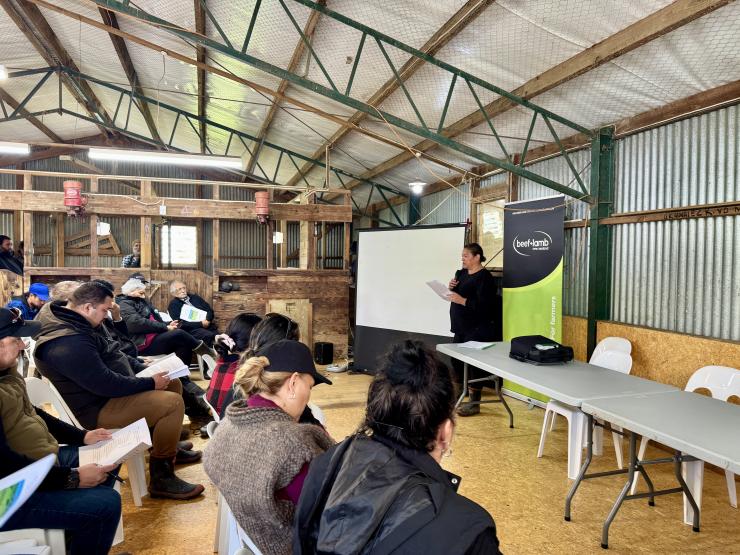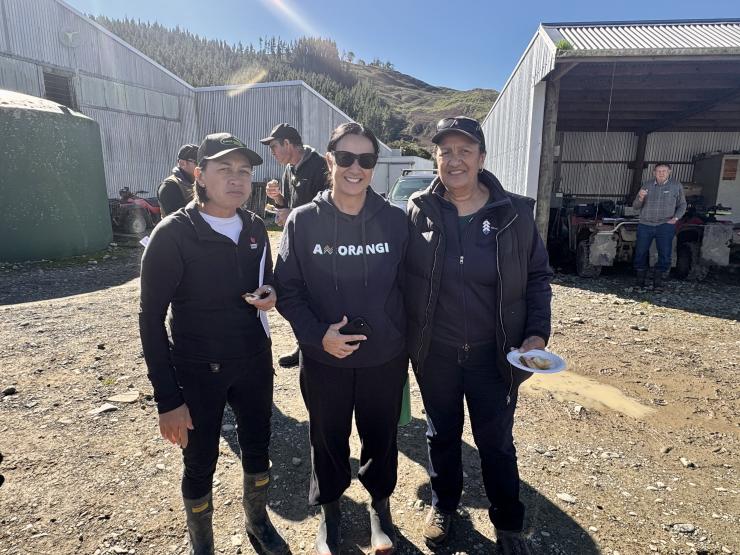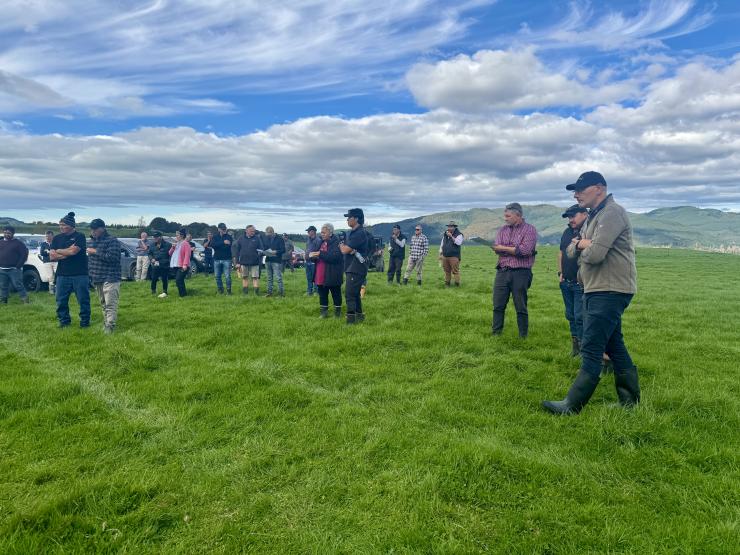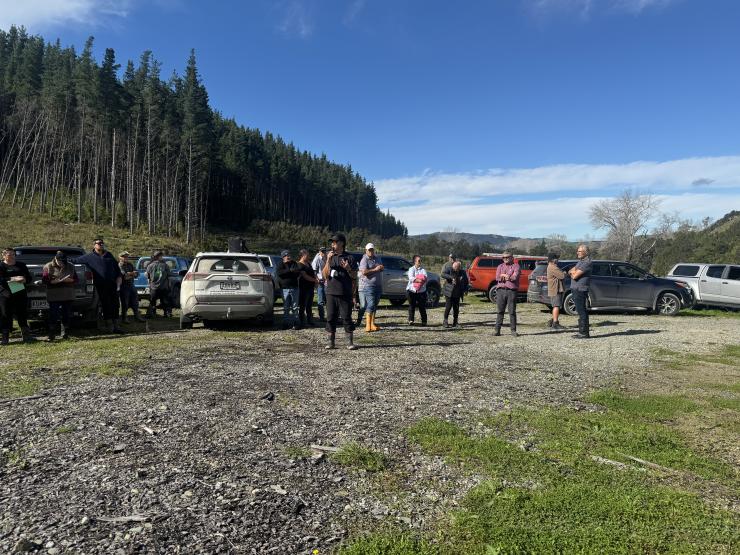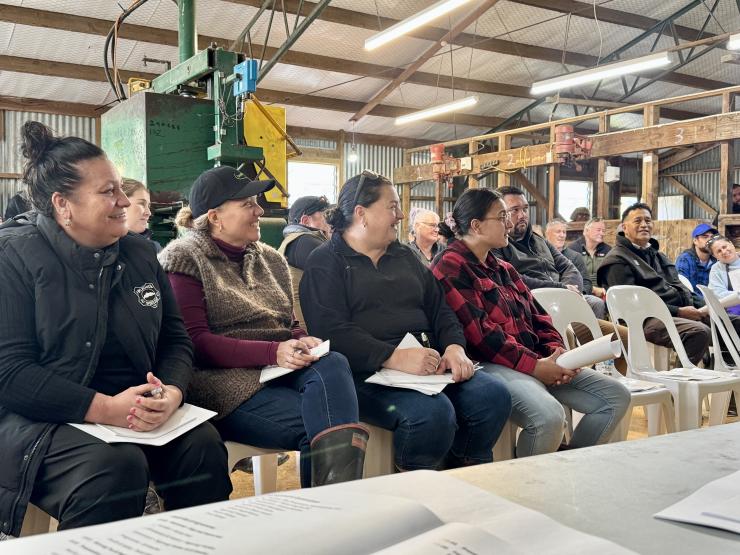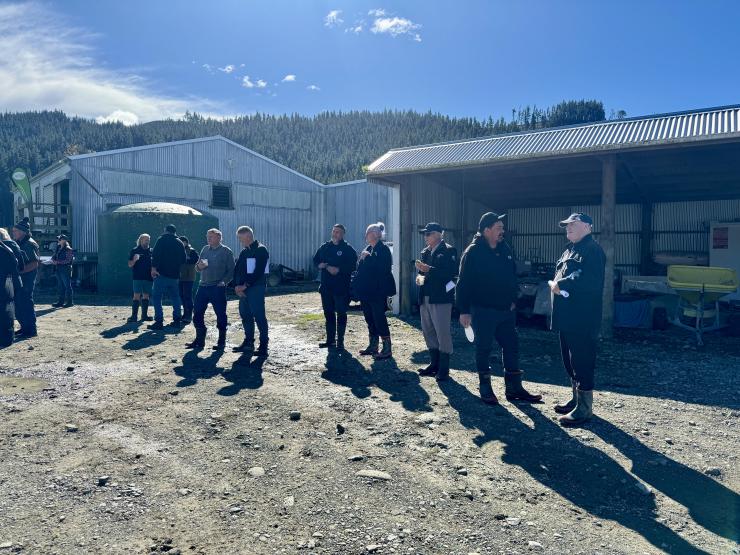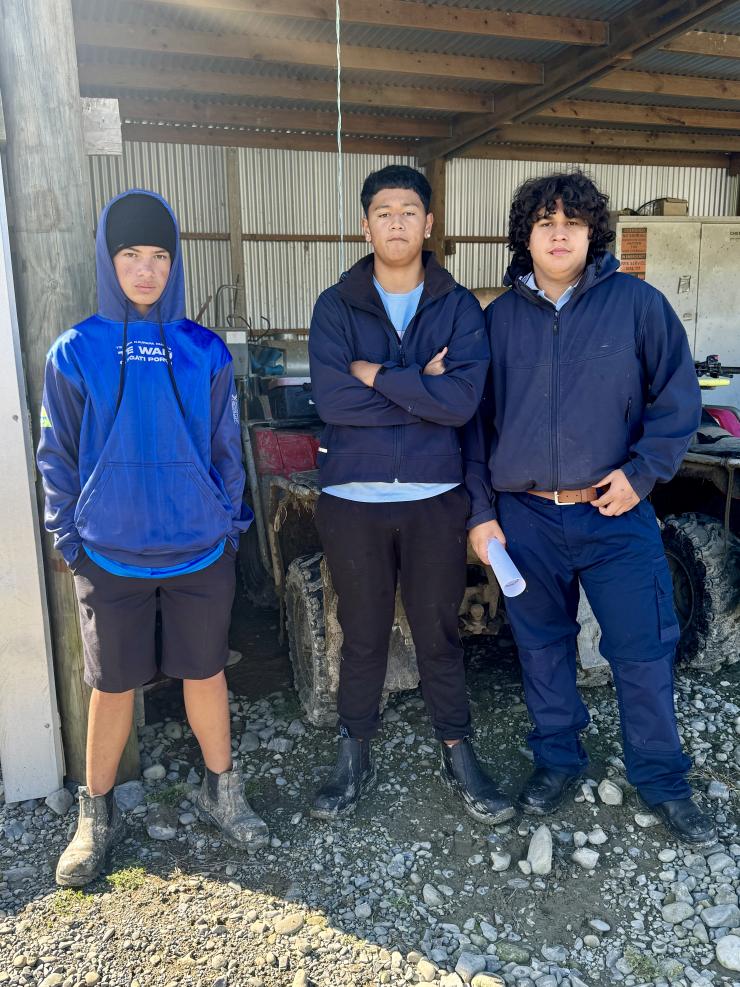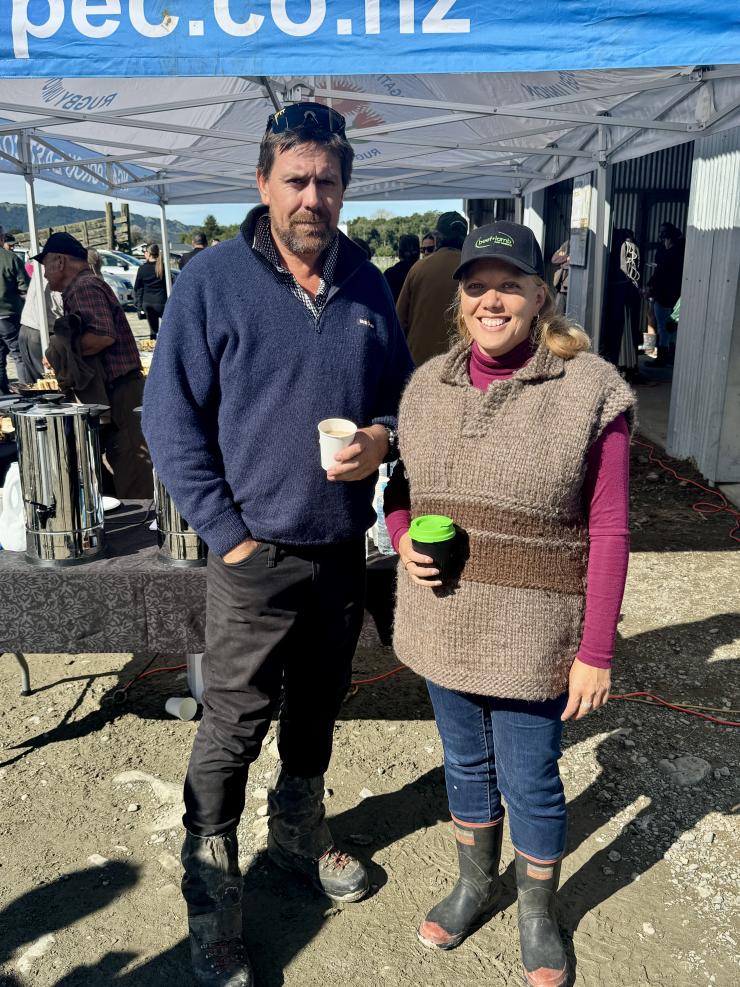Around 140 people from across the East Coast recently gathered at Tutumatai Station, near Ruatōria, to learn about the farm’s journey over the past year under B+LNZ’s Whenua Māori Hub Farm programme.
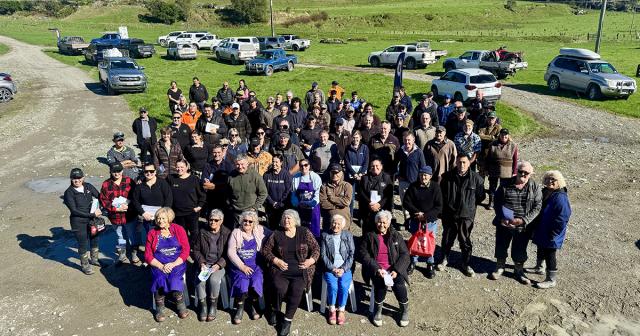
Tutumatai Station joined B+LNZ’s Whenua Māori Extension programme as a Hub Farm last March. The programme focuses on a single farm business over the course of multiple years, testing new technology and measuring the impact over time.
Pania King, B+LNZ’s Mātanga Whenua Māori (Māori Agribusiness Advisor), organised the day and says it was special to bring together farmers, whenua Māori representatives, Māori trust board members, and others for a wānanga-style (discussion-style) event. The day included a farm tour and gathered experts and stakeholders, providing them with a platform to share insights.
When asked about the significance of having a B+LNZ Whenua Māori Hub Farm, Pania says, “It’s really important to our levy payers that we share our different styles of farming, we always look for land use opportunities, and the connection from whakapapa (genealogy) to whenua (land) are recognised. That’s reflected in the adopted and adapted ‘He Ki Kei Aku Ringa’ (Growing what we do with our own hands) programme, which is essentially our strawman plan for a Hub Farm that’s relevant to Māori and whenua Māori.”
Tutumatai’s productivity lifts
Over the last year, Tutumatai Station has made improvements to its soil health and forage systems and have seen a lift in production following a stock policy change.
Pania says, “That change was driven by insights from the programme, with support from three voluntary farmers supporting Tutumatai as a Hub Farm.
The stock policy changes are a direct result of Tutumatai's Farm Manager and Governors working alongside these voluntary farmers. Things like increasing stock units, exploring land use change opportunities, and developing an overarching budget. It’s a big piece of work they’ve done entirely voluntarily. They’re high-performing farmers, and the support they’ve given to Tutumatai – and to me, as the advisor – has been incredible. It’s quite special, really,” she says.
The field day also highlighted the station’s focus on its land use capability plan and the importance of balancing farm productivity with whenua and whakapapa.
“Land use has become a major topic of discussion in our rohe (region), especially after Cyclone Gabrielle and with new regulations on the horizon.
“The station has an integrated farm plan funded by the Tairāwhiti Whenua Charitable Trust, so they have science and data to solidify decisions around stock policy and land use.
“With upcoming regulation changes, we discussed how to better utilise our whenua within what’s allowed. It’s about being smarter, doing things better, and future-proofing our farms and our communities,” she says.
Wānanga-style event possible through strong stakeholder relationships
B+LNZ partnered with several different agencies or organisations to provide some impactful insights to attendees.
Pania explains, “Bringing everyone together on the day was only possible because of strong, trusted stakeholder relationships. When those relationships are in place, they create real opportunities. It also shows our partners that we’re providing a platform by getting the right people in the room so they can share their expertise, funding, or whatever else they have in their kete (flax bag).”
“Covering a range of topics throughout the day adds real value for attendees,” she adds.
One of the key partners, Civil Defence, took part in the farm tour, asking the important question: ‘How prepared are we?’ Given how isolated the area is, emergency preparedness is a big topic especially in the wake of Cyclone Gabrielle.
A highlight was the skills part of the day. Attendees got to try out virtual reality (VR) training tools, using five sets of VR goggles to experience the types of training available through the programme and how that training can be delivered even in remote, rural areas.
One of the demonstrations was a module on cattle yard safety. Through this technology, users over the age of 16 can gain formal qualifications using VR training.
Tutumatai’s next steps
Following the field day, Pania met with members of Tutumatai Station and its governance to reflect on the day and set out some overarching goals for the next 12 months.
B+LNZ will continue to share Tutumatai’s journey under the Hub Farm programme. Keep a lookout in your weekly e-diaries and on social media.
B+LNZ thanks the Tairawhiti Whenua Charitable Trust (TW) for their ongoing support of B+LNZ and whenua Māori.
B+LNZ also thanks Tutumatai Station, and especially its governance group who have been extremely engaged, proactive and supportive of the B+LNZ Hub Farm programme.
Last but not least, B+LNZ thanks our partners/sponsors that helped on the day- AFFCO, PGG Wrightson, Ministry for Primary Industries, Department of Internal Affairs, Jobs & Skills Hub, Rata Forest Management, LandVision, TW, Gisborne District Council, Taiao Connect, and Civil Defence Tairāwhiti.
